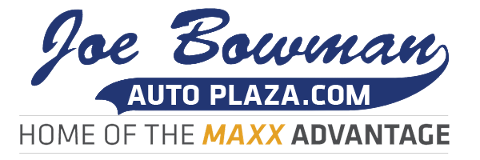How To Trade in A Car That Is Not Paid Off
Thinking about trading in a car that’s not paid off because you’ve found a new car you’d really like to buy? Should you?
The short answer is that depends.
When money is still owed on a vehicle and you want to trade it in for a new one, there are two possible scenarios. One is more advantageous than the other. But for both, you should proceed with caution.
Positive and Negative Equity
The first is positive equity which is when the value of your vehicle is worth more than amount owed on the loan.
This is the most advantageous position between the two. It’s like having money to apply towards your down payment. More about that in a minute.
The second is much riskier. When your vehicle isn’t worth as much as the amount owed, negative equity occurs. This is also called being “upside down” or “underwater” on your loan.
If you have negative equity on your vehicle, you’ll have to pay the difference between the trade-in value and the loan balance using either cash or another loan. That lump sum amount is then rolled into a new car loan.
We don’t recommend this approach to buying a new car. Here’s why.
Don’t Trade in A Car with Negative Equity
If you have negative equity on your current loan, postpone the trade-in until you are no longer underwater. Rolling over your current loan into a new one places yourself at risk, and your bank account.
Essentially, you’re paying on a vehicle you no longer own, plus the new vehicle. You’ll also have to pay a higher interest rate on the new loan. Don’t do it. It’s just not worth it.
Wait until you have the loan paid down or, better yet, paid off before you venture into the new car buying market.
How A Car Trade-In Works with Positive Equity
Here at our Harrisonburg, Virginia dealership, we’ve conducted many, many car loans in our 60+ years of business. A lot of them include a trade-in, which simply means that the value of your car is subtracted from the new car price.
For a trade that has a loan balance, we take over the loan and pay it off. While we handle all the paperwork to establish our dealership as the new owner, there are some items you need to bring to us so that we can transfer ownership.
Trade-In Preparation Is Key
We recommend you prepare as much as possible before the actual trade. Start with our Carfax Trade-In Value page on our website. This will give you the current worth of your vehicle.
You can also look up the current value of your vehicle using either Edmunds or Kelley Blue Book.
Then contact your auto lender to get the payoff amount of your current loan.
Once you’ve established that you have positive equity—your car is worth more than the remaining car loan amount—you’re ready to discuss a trade-in with us.
How A Trade-In Works Using Positive Equity
Let’s say you owe $5,000 on your current car but it’s worth $8,000. That means you now have $3,000 to apply to the purchase of a new car.
The equity in your old vehicle is deducted from the sales price of your new vehicle. In addition to the positive equity, you can also make an additional down payment which we highly recommend. The more you can put down, the greater the reduction in your overall loan balance.
Should You Just Sell the Vehicle Instead of Trading It?
Selling your vehicle privately is always an option. It just means you do more work to get the car sold. The vehicle must be professionally cleaned, repairs must be made, and you have the expense of advertising the car.
Then you wait for a buyer. Once you find one, you’re responsible for paying off the current loan and transferring title.
If you don’t want to bother with these extra steps, choosing to trade in your vehicle is an excellent option. We take care of all those steps to prepare it for resale on our Harrisonburg used car lot.
Your vehicle will go through a rigorous 75-point inspection before we place it for sale. We make any repairs needed and then provide a limited warranty for the new buyer.
Get Pre-Loan Approval
Once you’ve done your homework on trading in your old vehicle, get pre-approved for a new car loan either through your lender or through our finance department.
If you choose to work with us, you’ll find our interest rates are highly competitive and our loans are all simple interest.
That means you can pay additional amounts on your loan without penalty, allowing you to pay off the loan more quickly. What’s more, because all the financial work is done in-house, we can get you in to your new vehicle more quickly.
If you’d still prefer to work with your lender, we can do that, too! It will just take a little longer to process your lender’s paperwork.
Shop Within Your Budget
Once you know how much you can afford to buy, you can shop for a vehicle that’s within your budget. That’s important!
Having a car payment that you can afford will make the life of the loan easier on you. Perhaps even allowing you to make extra payments to get the vehicle paid off sooner.
Conclusion
Trading in a car that is not paid off can be done, but it must be done with thoughtful consideration. You want to make sure that doing so works to your advantage and does not create more debt than necessary.
When you’re ready to buy your next new car, turn to Joe Bowman Auto Plaza. We’ve been helping people just like you find the right vehicle for your lifestyle and budget for 60+ years!
The short answer is that depends.
When money is still owed on a vehicle and you want to trade it in for a new one, there are two possible scenarios. One is more advantageous than the other. But for both, you should proceed with caution.
Positive and Negative Equity
The first is positive equity which is when the value of your vehicle is worth more than amount owed on the loan.
This is the most advantageous position between the two. It’s like having money to apply towards your down payment. More about that in a minute.
The second is much riskier. When your vehicle isn’t worth as much as the amount owed, negative equity occurs. This is also called being “upside down” or “underwater” on your loan.
If you have negative equity on your vehicle, you’ll have to pay the difference between the trade-in value and the loan balance using either cash or another loan. That lump sum amount is then rolled into a new car loan.
We don’t recommend this approach to buying a new car. Here’s why.
Don’t Trade in A Car with Negative Equity
If you have negative equity on your current loan, postpone the trade-in until you are no longer underwater. Rolling over your current loan into a new one places yourself at risk, and your bank account.
Essentially, you’re paying on a vehicle you no longer own, plus the new vehicle. You’ll also have to pay a higher interest rate on the new loan. Don’t do it. It’s just not worth it.
Wait until you have the loan paid down or, better yet, paid off before you venture into the new car buying market.
How A Car Trade-In Works with Positive Equity
Here at our Harrisonburg, Virginia dealership, we’ve conducted many, many car loans in our 60+ years of business. A lot of them include a trade-in, which simply means that the value of your car is subtracted from the new car price.
For a trade that has a loan balance, we take over the loan and pay it off. While we handle all the paperwork to establish our dealership as the new owner, there are some items you need to bring to us so that we can transfer ownership.
- Your driver’s license
- Loan info including payoff amount and the account number
- Proof of insurance
- Vehicle registration
- All keys to the vehicle including remotes
- A printout of the trade-in value
Trade-In Preparation Is Key
We recommend you prepare as much as possible before the actual trade. Start with our Carfax Trade-In Value page on our website. This will give you the current worth of your vehicle.
You can also look up the current value of your vehicle using either Edmunds or Kelley Blue Book.
Then contact your auto lender to get the payoff amount of your current loan.
Once you’ve established that you have positive equity—your car is worth more than the remaining car loan amount—you’re ready to discuss a trade-in with us.
How A Trade-In Works Using Positive Equity
Let’s say you owe $5,000 on your current car but it’s worth $8,000. That means you now have $3,000 to apply to the purchase of a new car.
The equity in your old vehicle is deducted from the sales price of your new vehicle. In addition to the positive equity, you can also make an additional down payment which we highly recommend. The more you can put down, the greater the reduction in your overall loan balance.
Should You Just Sell the Vehicle Instead of Trading It?
Selling your vehicle privately is always an option. It just means you do more work to get the car sold. The vehicle must be professionally cleaned, repairs must be made, and you have the expense of advertising the car.
Then you wait for a buyer. Once you find one, you’re responsible for paying off the current loan and transferring title.
If you don’t want to bother with these extra steps, choosing to trade in your vehicle is an excellent option. We take care of all those steps to prepare it for resale on our Harrisonburg used car lot.
Your vehicle will go through a rigorous 75-point inspection before we place it for sale. We make any repairs needed and then provide a limited warranty for the new buyer.
Get Pre-Loan Approval
Once you’ve done your homework on trading in your old vehicle, get pre-approved for a new car loan either through your lender or through our finance department.
If you choose to work with us, you’ll find our interest rates are highly competitive and our loans are all simple interest.
That means you can pay additional amounts on your loan without penalty, allowing you to pay off the loan more quickly. What’s more, because all the financial work is done in-house, we can get you in to your new vehicle more quickly.
If you’d still prefer to work with your lender, we can do that, too! It will just take a little longer to process your lender’s paperwork.
Shop Within Your Budget
Once you know how much you can afford to buy, you can shop for a vehicle that’s within your budget. That’s important!
Having a car payment that you can afford will make the life of the loan easier on you. Perhaps even allowing you to make extra payments to get the vehicle paid off sooner.
Conclusion
Trading in a car that is not paid off can be done, but it must be done with thoughtful consideration. You want to make sure that doing so works to your advantage and does not create more debt than necessary.
When you’re ready to buy your next new car, turn to Joe Bowman Auto Plaza. We’ve been helping people just like you find the right vehicle for your lifestyle and budget for 60+ years!


